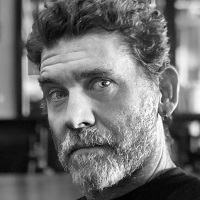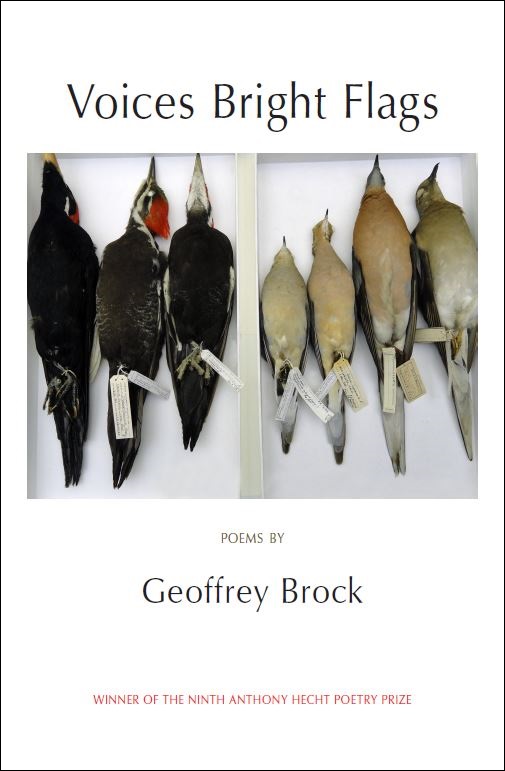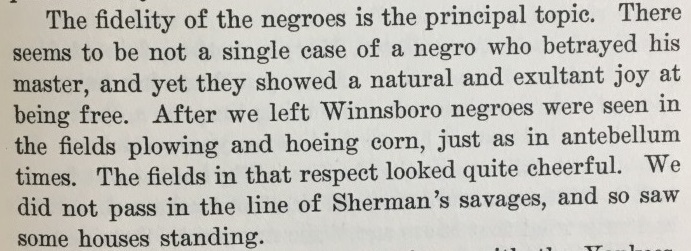Geoffrey Brock

Research at AAS
I was a William Randolph Hearst Fellow in 2001. As it turned out, I was in the very early stages of work on a motley group of poems about various episodes and figures of American history, poems that would come together more than a decade later in the collection Voices Bright Flags (2014). For me they were experiments in the limits of political poetry and what is sometimes called “public poetry,” as distinct from the more personal poems I was also working on the same time. Those poems were based in part on research and included pieces about the 1619 arrival in the Virginia Colony of the first slaves, Captain Cook’s widow, the Civil War and the Gold Rush and Buffalo Bill’s Wild West Show. I tended to focus on minor figures in quiet moments, often just before or after major, noisy events—figures and moments that touched in some, often oblique, way on the displacements, migrations, and conflicts that have shaped our history.
Wilson's Ivory-Bill: 1808
I recall two poems in particular that I began under the generous dome. The first, “Wilson’s Ivory-Bill: 1808,” was inspired by an account by Alexander Wilson—a Scottish poet who remade himself as the father of American ornithology—of his harrowing stewardship of an Ivory-bill woodpecker, demonstrating that high-minded naturalists could also be, in their own ways, brutal colonizers. Here is a relevant excerpt from Wilson’s American Ornithology:
And here’s my poem, which gently reshapes and fictionalizes Wilson’s account in an effort to create a kind of historical fiction from that documentary source:
was wounded only slightly in the wing.
His voice recalled exactly the violent cries
of a child in pain—endless panicked shrieking
that terrified my horse. Our shrill parade
through Wilmington elicited surprise:
windows filled with faces, which filled with eyes.
I was received at the inn with real alarm,
by females especially. When I declared
I sought a room for myself and my small child
(I played it well), how foolishly they stared!
Drawing the bundle from beneath my arm,
I showed the livid bird: his screams, though wild,
were drowned by the mirth of those I had beguiled.
I locked him in my room to tend my horse.
When I returned, plaster covered the floor
beneath his perch above the window, where
a great hole gaped in the lath. An hour more,
the weatherboards would have yielded to his force
and he might still be plying that Southern air—
his image lost to us, but restored there.
I felt the failure mine as I watched him die,
though it was he who refused all proffered food.
Once, when he cut me as I took his drawing,
I rendered his bright crest with my fresh blood,
briefly conveying his nobility—
before it browned, it was a splendid thing.
He was but slightly wounded in the wing.
Monroe’s Doctrine: Good Friday, 1865
The second poem, based on events recounted in Mary Boykin Chesnut’s diaries, is called “Monroe’s Doctrine: Good Friday, 1865.” Like the best diaries of private citizens, Chesnut’s is wonderfully unguarded (because not for public consumption) and full of vivid observations and reflections. Her description of the aftermath of emancipation marvelously evokes the complex weirdness of relations between masters and slaves, on the one hand, and between slaves and their northern liberators, on the other. It was, in particular, Chesnut’s brief second-hand description of a slave named Monroe that particularly fired my imagination. Here are two passages from Chesnut:
Tuesday 2 May 1865—The fidelity of the negroes is the principal topic. There seems to be not a single case of a negro who betrayed his master, and yet they showed a natural and exultant joy at being free. After we left Winnsboro negroes were seen in the fields plowing and hoeing corn, just as in antebellum times. The fields in that respect looked quite cheerful.... Mary Kirkland has had experience with the Yankees. She has been pronounced the most beautiful woman on this side of the Atlantic, and has been spoiled accordingly in all society. When the Yankees came, Monroe, their negro manservant, told her to stand up and to hold two of her children in her arms, with the other two pressed as close against her knees as they could get. Mammy Selina and Lizzie then stood grimly on each side of their young missis and her children. For four mortal hours the soldiers surged through the rooms of the house. Sometimes Mary and her children were jostled against the wall, but Mammy and Lizzie were stanch supporters. The Yankee soldiers taunted the negro women for their foolishness in standing by their cruel slave-owners, and taunted Mary with being glad of the protection of her poor ill-used slaves. Monroe meanwhile had one leg bandaged and pretended to be lame, so that he might not be enlisted as a soldier, and kept making pathetic appeals to Mary. “Don’t answer them back, Miss Mary,” said he. “Let ’em say what dey want to; don’t answer ’em back. Don’t give ’em any chance to say you are impudent to ’em.”
Every time I read this passage I’m staggered anew by the wrenching ironies of a slave instructing his mistress in the strategic use of silence in the face of power. Monroe’s unrecorded point of view seemed so crucial that I wanted to imagine the scene from his perspective, lending him a voice to complement—and counter—hers. I invented certain details, conflated others, in an effort to evoke Monroe’s dignified intercession and his mistress’s difficult (as I imagine it) surprise:
show a ripple of change; they are sphinxes.”
—Mary Boykin Chesnut
Miss Mary’s diamonds was hid under Lizzie’s apron.
Them Yanks was taking this and breaking that.
They mocked Miss Mary for running to us, then us
for standing by her, even though we was free.
Knowing Miss Mary’s mouth, I says to her
“Don’t answer back, Miss Mary—just let ’em cuss.
Don’t let ’em say that you was impudent.”
Them Yanks they laughed at that. But not Miss Mary.
She squinnied at me like I wasn’t her Monroe.
Like them old draperies that always hung
in front of her eyes was flung aside, and she
was having trouble adjusting to the light.
Next day we gave them diamonds back like they
was garden peas, and Lizzie and me, we left.
About the Fellow
Geoffrey Brock is the author of two collections of poems (Weighing Light and Voices Bright Flags), the editor of The FSG Book of 20th-Century Italian Poetry, and the translator of numerous volumes of Italian poetry and prose. His poems appear in journals such as Poetry, Paris Review, and Yale Review, as well as in the Best American and Pushcart Prize anthologies. He has received fellowships and prizes from the NEA, the MLA, Poetry magazine, the Guggenheim Foundation, the Academy of American Poets, and the Cullman Center at the New York Public Library. He teaches in the MFA Program in Creative Writing and Translation at the University of Arkansas.







